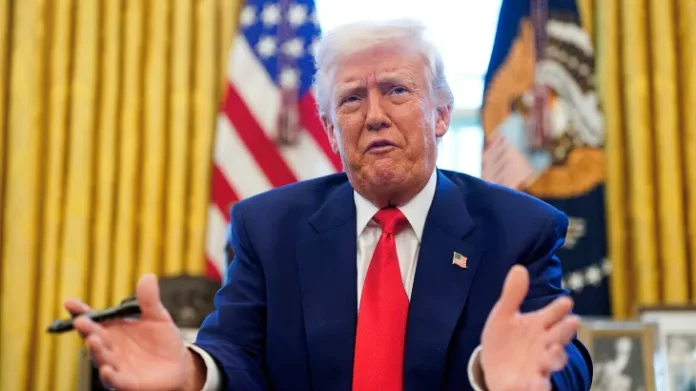On May 28, 2025, a federal court delivered a stunning blow to President Donald Trump’s trade agenda, as the U.S. Court of International Trade ruled that his steep tariffs on China, Canada, Mexico, and other nations exceeded his legal authority. The decision to block these tariffs, which Trump had imposed under a novel interpretation of emergency powers, sent ripples through global markets and sparked heated debate about the future of U.S. trade policy. This ruling marks a critical moment, halting what many feared would escalate into a full-blown trade war. Let’s dive into what happened, why it matters, and what comes next.
Why Were Trump Tariffs Blocked?
The court’s decision hinged on Trump’s use of the International Emergency Economic Powers Act to justify his tariffs. He argued the law allowed him to impose levies—up to 50% on some imports—to counter issues like fentanyl smuggling from Canada and Mexico and to pressure China on trade imbalances. Judges disagreed, stating the law, primarily designed for sanctions and embargoes, didn’t grant such sweeping tariff powers. The ruling gave the executive branch just 10 days to halt these measures, though the Trump administration quickly signaled plans to appeal.
This wasn’t just a legal setback. The tariffs, announced in April 2025, aimed to protect American workers by raising costs on foreign goods. Critics, however, warned they’d spike prices for consumers and disrupt supply chains. The court’s move has paused that experiment, but the fight is far from over.
The Immediate Impact of Trump Tariffs Blocked
Markets reacted swiftly to the news. U.S. futures surged, reflecting relief among investors who’d braced for higher costs and trade tensions. Businesses, from manufacturers to retailers, exhaled as the threat of costlier imports eased—at least for now. Here’s a quick look at the tariffs in question:
- China: 30% tariffs on a range of goods, down from a proposed 50%.
- Canada and Mexico: 25% levies tied to fentanyl smuggling concerns.
- Global “reciprocal” tariffs: Varied rates to match other nations’ tariffs on U.S. goods.
The pause doesn’t erase all tariffs. Some, like those from Trump’s earlier trade policies, remain at historically high levels. Still, blocking these new measures avoids immediate economic strain, especially for industries reliant on imported materials.
Global Reactions to the Ruling
The decision reverberated worldwide. China, which had threatened to restrict rare earth exports in retaliation, welcomed the ruling but kept its options open. Japan and South Korea, wary of Trump’s trade threats, saw the court’s move as a chance to push for fairer negotiations. The European Union, which secured a tariff delay until July 9, 2025, after talks with Trump, gained breathing room to strengthen its trade stance.
Businesses and governments alike now face uncertainty. Will Trump’s appeal succeed? Could he find another legal avenue to push his agenda? These questions loom large as global trade hangs in the balance.
What’s Next After Trump Tariffs Blocked?
The Trump administration’s appeal will likely head to a higher court, possibly the U.S. Court of Appeals. Legal experts suggest the case could escalate to the Supreme Court, given its implications for executive power. Meanwhile, Trump’s team is exploring alternative trade measures, like targeted sanctions or sector-specific tariffs, to keep pressure on foreign competitors.
For consumers, the ruling offers temporary relief. Economists had warned that Trump’s tariffs could raise prices for everyday goods—think electronics, clothing, and cars—by 5-10%. Small businesses, already squeezed by inflation, were particularly vulnerable. The pause buys time, but the threat of future tariffs keeps everyone on edge.
The Bigger Picture
This isn’t just about tariffs; it’s about the scope of presidential power and America’s role in global trade. Trump’s push for protectionism reflects a broader debate: Should the U.S. prioritize its workers over global cooperation? Supporters argue his policies shield jobs from cheap foreign labor. Critics counter that tariffs hurt consumers and isolate the U.S. economically. The court’s ruling tilts the scales toward the latter—for now.
As the appeal process unfolds, businesses and policymakers must adapt to a fluid situation. Some companies are already diversifying supply chains to avoid future disruptions. Others are lobbying for clearer trade rules. The stakes are high, and the outcome will shape U.S. trade for years.
Stay Informed and Engaged
The saga of Trump tariffs blocked is far from over. It’s a story of legal battles, economic stakes, and global rivalries. Keep an eye on court updates and trade talks—they’ll affect everything from your grocery bill to international relations. Share your thoughts: Do you think tariffs protect American jobs, or do they do more harm than good? Drop a comment below and join the conversation.
